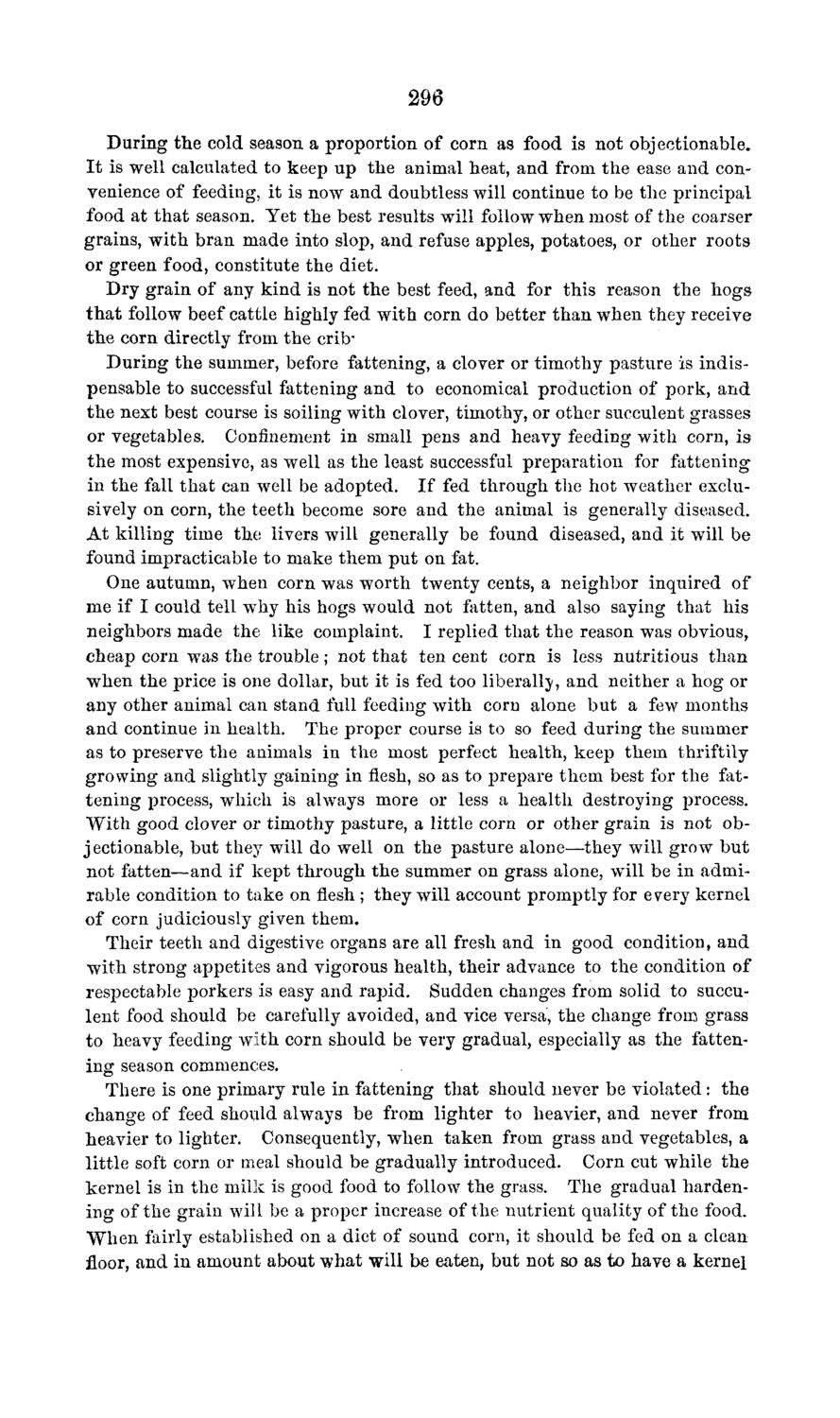| |
| |
Caption: Board of Trustees Minutes - 1869
This is a reduced-resolution page image for fast online browsing.

EXTRACTED TEXT FROM PAGE:
296 During the cold season a proportion of corn as food is not objectionable. I t is well calculated to keep up the animal heat, and from the ease and convenience of feeding, it is now and doubtless will continue to be the principal food at t h a t season. Yet the best results will follow when most of the coarser grains, w i t h bran made into slop, and refuse apples, potatoes, or other roots or green food, constitute the diet. Dry grain of any k i n d is not the best feed, and for this reason the hogs t h a t follow beef cattle highly fed with corn do better t h a n when they receive t h e corn directly from the crib" During the summer, before fattening, a clover or timothy pasture is indispensable to successful fattening and to economical production of pork, a n d the next best course is soiling with clover, timothy, or other succulent grasses or vegetables. Confinement in small pens and heavy feeding with corn, is t h e most expensive, as well as the least successful preparation for fattening in the fall t h a t can well be adopted. If fed through the hot weather exclusively on corn, the teeth become sore and the animal is generally diseased. A t killing time the livers will generally be found diseased, and it will be found impracticable to make them put on fat. One autumn, when corn was worth twenty cents, a neighbor inquired of me if I could tell why his hogs would not fatten, and also saying that his neighbors made the like complaint. I replied that the reason was obvious, cheap corn was the trouble; not that ten cent corn is less nutritious than when the price is one dollar, but it is fed too liberally, and neither a hog or any other animal can stand full feeding with corn alone b u t a few months and continue in health. The proper course is to so feed during the summer as to preserve the animals in the most perfect health, keep them thriftily growing and slightly gaining in flesh, so as to prepare them best for the fattening process, which is always more or less a health destroying process. W i t h good clover or timothy pasture, a little corn or other grain is not objectionable, but they will do well on the pasture alone—they will grow b u t not fatten—and if kept through the summer on grass alone, will be in admirable condition to take on flesh ; they will account promptly for every kernel of corn judiciously given them. Their teeth and digestive organs are all fresh and in good condition, and with strong appetites and vigorous health, their advance to the condition of respectable porkers is easy and rapid. Sudden changes from solid to succulent food should be carefully avoided, and vice versa, the change from grass to heavy feeding w i t h corn should be very gradual, especially as the fattening season commences. There is one primary rule in fattening that should never be violated : the change of feed should always be from lighter to heavier, and never from heavier to lighter. Consequently, when taken from grass and vegetables, a little soft corn or meal should be gradually introduced. Corn cut while the kernel is in the milk is good food to follow the grass. The gradual hardening of the grain will be a proper increase of the nutrient quality of the food. W h e n fairly established on a diet of sound corn, it should be fed on a clean floor, and in amount about what will be eaten, but not so as to have a kernel
| |